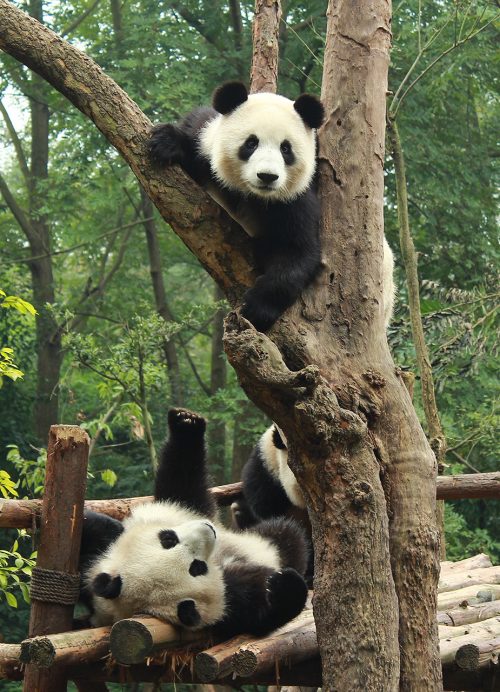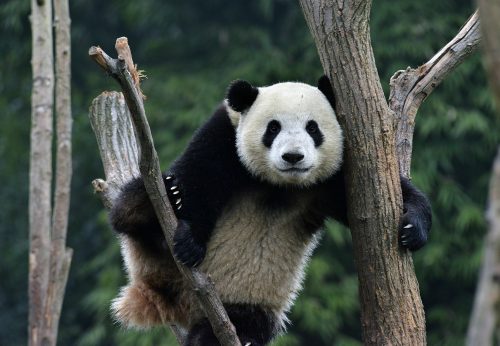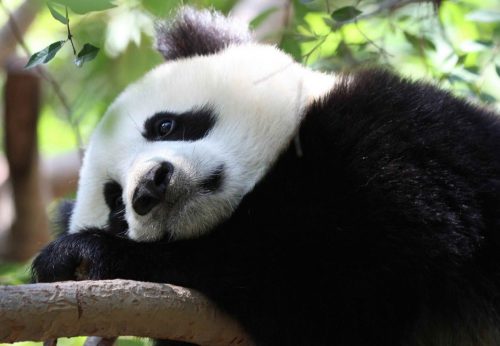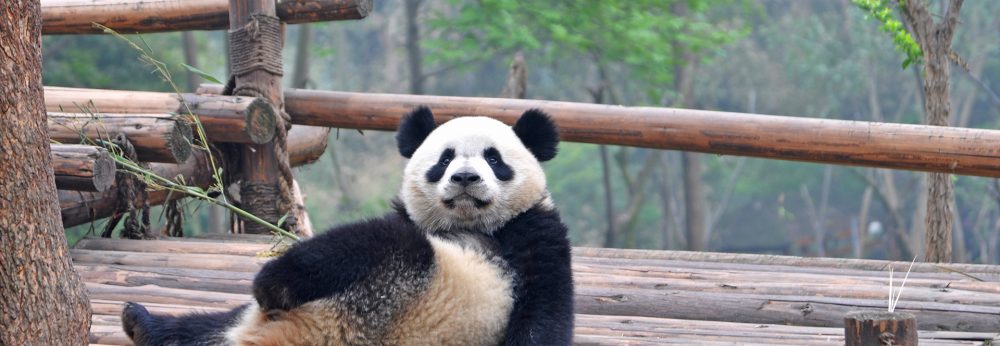Giant panda is the national treasure of China. They have lived on Earth for over three million years. They are good swimmers and tree climbers. Although they are members of the bear family, they are not similar to other bears, in that their diet is over 99% bamboo.
As pandas are an endangered species, are very cute, and have such a gentle nature, they get attention from all over the world.
On this page, we will introduce you to many interesting facts about pandas. After reading them, you will have learned everything you have ever wanted to know about pandas. Tours to visit pandas, hold a panda for photos, and a Panda Keeper Program are all available.
What Does Giant Panda Look Like?
Distinctive Black and White Characteristics.
A giant panda has a typical bear’s body but is a distinctive black and white color, with black fur around the eyes and on the ears, legs, chest, and shoulders, while the rest of the body is white. You may not notice at first, but it has a 10 cm long white tail. Many people find the chunky, lumbering giant panda to be cute.
- Distinctive black and white color
- Adult length: 120–150 cm in length with a 10 cm tail
- Adult height: 90 cm tall at the shoulder (on all four legs)
- Adult weight: 80–100 kg, with males being 10% larger and 20% heavier than females
- New born panda’s weight: The average weight is 100g (0.2 pounds), about two eggs weight and only 1/900 of their mother’s weight.
- Strong teeth
- Cat-like pupils
How Long Does Panda Live For?
- Life span in the wild: 20 years
- Life span in zoos: 30 years (the oldest panda on record is 36 years old, which is equal to a human reaching 144 years old)
What Is a Panda’s Diet?
Giant pandas are members of the bear family. Although a giant panda possesses the digestive system of a carnivore, it is almost entirely vegetarian.
A panda’s daily diet consists almost entirely of bamboo. A panda can eat for 14 hours and consume 12–38 kilograms of bamboo a day. Sometimes, however, they do not just eat bamboo. Only about 1% of their diet consists of other plants and even meat, such as small rodents.
What Does Panda Look Like While Eating?
Pandas usually sit upright while eating. They are in a pose that resembles how humans sit on the floor. This posture makes it convenient for them to grasp bamboo with a pseudo thumb on their front paws. They actually have six fingers, as well as strong teeth and powerful jaws to crush tough bamboo.
What Does Panda Do Every Day?
We have explained that pandas eat for about 14 hours a day so what do they do with the rest of the day? The answer is that they sleep. If you have visited a panda in a zoo, you may have seen them sleeping. Pandas sleep on their stomach with their forelegs stretched out or huddled up.
Although they like sleep and eat, they can do more. They are also excellent swimmers and good at climbing trees.
Where Does Panda Live?
Once, giant pandas were spread across China, Myanmar, and Vietnam.
Nowadays, giant pandas are only found in about 20 isolated areas of bamboo forests within six mountain ranges in China’s Sichuan, Shaanxi, and Gansu provinces. Most of the remaining wild pandas live in the Minshan Mountains and Qinling Mountains.
Numbers of Panda
- In zoos and breeding centers: 375
- In the wild: 1,864 (census in 2014)
Social Structure
Generally, adult wild giant pandas are solitary but they communicate periodically through scent, call, and meeting with other pandas. Male pandas usually find females to mate with in spring. Then, the male pandas will leave. Female pandas give birth to a cub or twins, or very occasionally triplets, after five months of pregnancy. However, a panda mother only has the ability to take care of one cub as a panda cub is very weak and only 1/900th the size of its mother and it is not easy to find food. Therefore, the panda mother will choose the strongest one to raise.
As a panda mother can only take care of one offspring, the young panda will be driven off by its mother when it reaches about two years of age, and she will then begin to make a den for the arrival of the next cub. The young panda then has to fend for itself.
Get Close to Pandas
We know that adorable pandas attract many visitors to China who may want to see and even hug a panda.
See Pandas
If you want to see pandas only, there are some recommended places to see pandas. The most highly recommended venue is the Chengdu Giant Panda Breeding and Research Center.
Hug a Panda for Photos or Join the Panda Keeper Program
Go to Dujiangyan Panda Base where you can hug a panda for a photo opportunity or join in with a 1-Day Panda Keeper Program. Now, Dujiangyan Panda Base is the only place providing these services. In Dujiangyan Panda Base, visitors may also see some pandas who have had several years’ experience in other countries, like Tiger who once lived in Washington DC.




